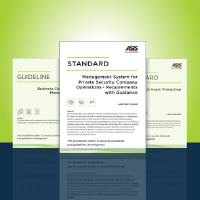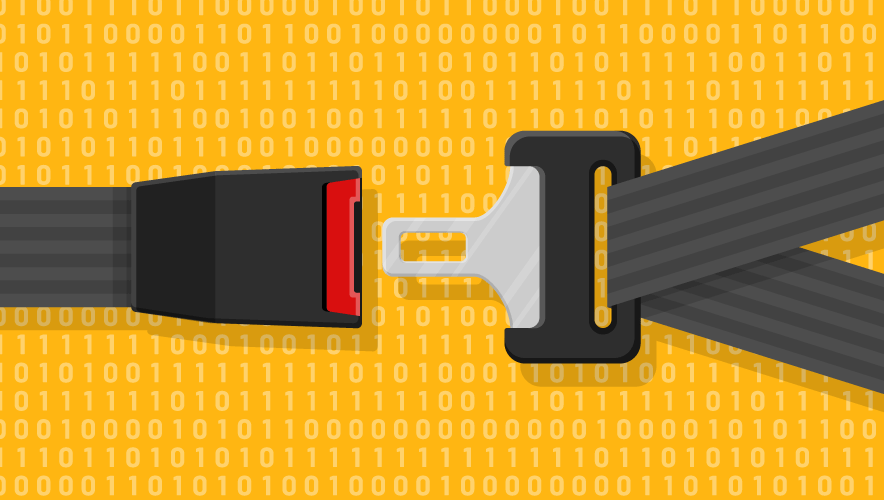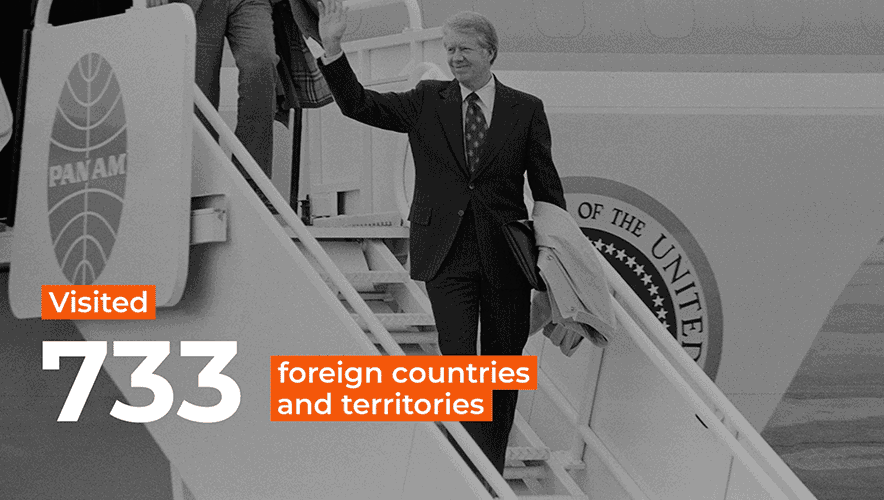The Importance of Standardizing EP
The job of an executive protection (EP) professional is to protect an individual, known as the client or protectee, from harm and embarrassment. These are very broad terms and do not simply mean preventing physical harm or personal embarrassment.
A prime example of this protection role gone wrong is when a group of protection officers were escorting singer Celine Dion backstage after her performance in Osaka, Japan, in 2008. In video footage of the incident posted to YouTube, viewers can see Dion attempting to shake hands with her fans while moving—a common practice for performers.
SponsoredInside the Shadows of Alt-Tech Social Networks: The New Haven for Threats Against ExecutivesIn recent years, criminals and fringe groups have started moving to a growing collection of “alt-tech” social networks. And as a result, these communities have become breeding grounds for doxxings, false rumors, and violent extremists – posing a serious risk to executives and high-ranking employees. So how do protectors respond to this threat? |
The security team, however, was not in the correct position to allow this movement. They blocked her from moving forward, even stepping on her dress, creating gaps in her protective posture that allowed a videographer to bump into Dion. At the end of the video, the singer pulled the security team into a room and had to choreograph their movement to prevent it from happening at future performances.
This security team’s inability to move properly created opportunities for someone with ill intent to harm Dion. By stepping on the singer’s dress, they could have caused her to trip, fall, and injure herself. By getting in her way, they allowed others to bump into her. The incident caused embarrassment for Dion and the team.
Due to the broad nature of EP work and a lack of standards for how it should be performed, it can be difficult for practitioners, businesses, and clients to measure the quality and professionalism of the service being provided.
Those who provide EP can fall into a variety of categories. First are in-house protection teams or corporate teams. These teams work directly for the client or protectee. Second are primary vendors who work in place of an in-house protection team. Then, there are companies who support both in-house and primary vendors. Due to state licensing requirements, there is often a need for support from local licensed and insured security companies at the locations that the protectee travels to.
Without standards, it is difficult to hold organizations or individuals accountable for poor performance.
Standards, as defined by the International Standards Organization, provide a “formula that describes the best way of doing something. Standards are the distilled wisdom of people with expertise in their subject matter and who know the needs of the organizations they represent—people such as manufacturers, sellers, buyers, customers, trade associations, users, or regulators. When things don’t work as they should, it often means that standards are absent.”

|
ASIS International Standards & GuidelinesASIS International is an ANSI-accredited standards developing organization, developing national and international standards to serve the needs of today’s global security practitioners. Security professionals can access ASIS’s 10 Standards and six Guidelines as softcover editions or eBooks. ASIS members can access ASIS S&G eBooks for free anytime. Learn more about ASIS Standards & Guidelines, including efforts in executive protection standards development, here. |
Without standards, it is difficult to hold organizations or individuals accountable for poor performance, poor decision making, or to a level of measurable training. It’s important to note that the job for EP professionals is to protect lives—and yet there is no standard on how to do so.
Without standards for the profession, there is an unlimited supply of negative and client endangering events by individuals and organizations providing protection services. These situations include wrongful deaths, assaults on those being protected, and theft of property of the protectee.
In 2020, for instance, a security guard acting as an EP agent for a local television state shot and killed a protestor in Denver, Colorado. An investigation revealed the guard did not have the appropriate licensing to be working as an armed private security officer in the city.
In another incident in 2019, a bodyguard was pistol whipped during a robbery targeting rapper Rich the Kid outside a recording studio in Atlanta. Three men confronted the rapper and his group, demanding their money and jewelry before assaulting the suspects, fleeing in a vehicle, and opening fire.
A lack of standards also impacts how EP businesses operate. For instance, use of social media to promote individuals or organizations providing security services, poor hiring practices with no background checks or qualification verifications, operating without proper licensing or insurance, or inaccurate portrayal of what an EP provider is.
Searches using the hashtag “#ExecutiveProtection” on social media reveal every imaginable stereotype of EP. There are posts showing individuals with suppressed pistols or rifles, security teams posed in front of or on private jets, and photos of agents wearing backwards hats and sunglasses portraying a version of the EP lifestyle that can be damaging to the profession. These portrayals create the façade that if you want to be successful in EP, you need to look and act like them—which is wrong and dangerous.
Creating and implementing standards for EP businesses and practitioners would help decrease negative and client endangering events, elevate the quality of service being provided, and increase the professionalism in which the service is delivered.
Additional benefits of standardizing EP could include:
Defines and standardizes terms. Depending on background, experience, and training, individuals use different terms to represent the same thing. A standard would define a common list of EP-related words and terms so regardless of background, experience, and training there is a common lexicon in the industry.
One example of terms that can cause confusion if interchanged is “site advance” versus “site survey” versus “site visit.” Each has their own definition and tasks to be performed, but people often misuse them or do not understand their differences.
Creates continuity in the industry. There are a variety of reasons why EP teams are rarely staffed with permanent members and protection team members change continuously. Having a standard will create a base line of operational processes that should be followed.
For instance, everyone on an EP team should be versed in what needs to be accomplished when conducting a “site advance” procedure. When in-house or primary vendors need to find local support or augment their teams, it’s important that they know the people they are bringing on have a common base of knowledge and understanding.
Standardizes knowledge base for reference. There are books and articles written and published by individuals on how to conduct EP operations. However, these are generally written from an individual's point of view, based on their experiences—which can differ from others in the industry. Standardization would create an objective body of knowledge that is vetted by the industry.
Creates a verifiable source for EP training. There are privately owned EP training schools that assert they set a standard for EP education, but this may be just a marketing claim. Many training schools operate independently without validating their teaching methods or content. A standard would provide a list of minimum topics which should be covered during training.
Increases stakeholder or protectee confidence in the expertise of the individual charged with their protection. Following a standard demonstrates to the client the expertise of the service provider. It will also show the practitioner’s dedication to their protection by ensuring that verifiable safety procedures are known and followed.
Reduces negative public contacts due to a more comprehensive understanding of the profession. Often, negative behavior and poor decision-making puts the protectee’s security team under a spotlight. This could be because the security team overacts and assaults or harms an individual while working with a client, or it could be because the protectee themselves were harmed, robbed, or embarrassed. This is the result of the lack of knowledge and training by those providing security services.
It’s a truism that you don’t know what you don’t know. Without standards for EP, there is no one valid and vetted place to go for answers. This affects not just those starting out in the industry but seasoned professionals as well who are looking for guidance to continue to develop their skillsets and their businesses.
Standards also help validate to stakeholders and protectee’s why specific security measures need to be taken. By referencing a standard, for instance, it makes it easier to justify an increase in budget expenses in security costs.
For example, a protectee has a two-person security detail. After an upcoming speech, the protectee may want to meet the public—creating a procedure known as a rope line where the protectee walks alongside a barricade shaking hands of fans and supporters. The standard might say to do this safely, there needs to be one security officer on the left of the protectee, one security officer on the right side of the protectee, and one security officer on the public side in the crowd following behind the row of individuals shaking hands. Each security agent would have different areas of responsibility, so without that minimum number of three security agents the protectee is at risk of harm or embarrassment.
Standards may also be able to provide liability cover to the service provider. If a security recommendation is made based on a standard and is denied by the stakeholder or protectee and a situation occurs, that security provider can defend themselves by referencing their recommendation.
Having a vetted and bonified standard provides a knowledge base for all those working in the industry. A standard will provide continuity, it will elevate the professionalism of how the service is delivered, and it will hold people accountable for their actions or inactions.
James Cameron, CPP, is president and CEO of Security Concepts Group, with more than 15 years of international experience in the security industry. He is the chairman of the Board of Executive Protection Professionals, which is working to create the first EP national standard to be registered with the American National Standards Institute, and a member of the ASIS Executive Protection Community.
© James Cameron, Security Concepts Group















